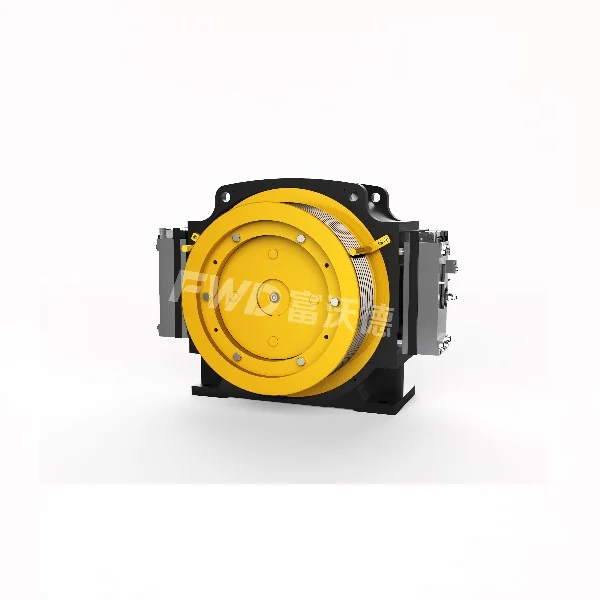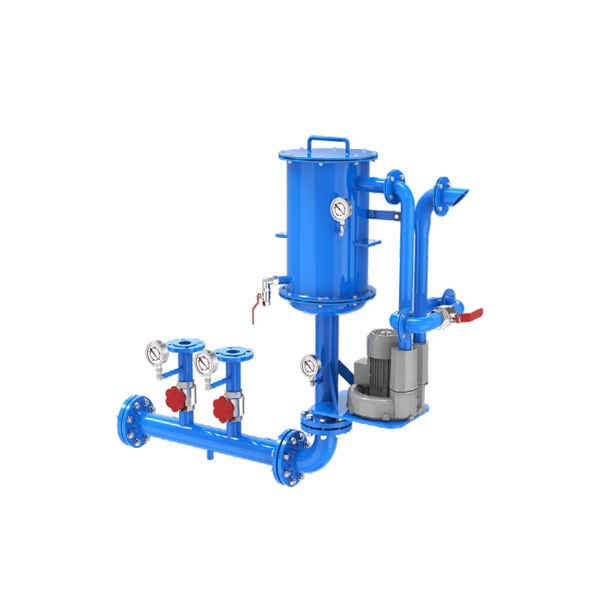Gearless Traction Machines: A Revolution in the Elevator Industry
4 min readIn modern buildings, elevators serve as crucial vertical transportation systems, with their performance and technical capabilities directly influencing the efficiency and comfort of the structure. As an innovative technology in elevator drive systems, gearless traction machines have garnered significant attention in recent years. This article XIZI FORVORDA discusses the advantages of gearless traction machines and their importance in the elevator industry, aiming to provide professionals with comprehensive knowledge and understanding.

Application Advantages of Gearless Traction Machines
1. Improved Energy Efficiency
The efficient energy conversion of gearless traction machines positions them as the preferred choice for energy-saving elevators. Research indicates that elevators equipped with gearless designs can enhance energy efficiency by approximately 30% compared to traditional gear traction machines. This advantage is particularly significant in large buildings, as it significantly reduces operating costs and contributes to lower carbon emissions. Specifically, the energy consumption of elevators in standby mode is minimal, meaning their impact on the overall energy consumption of the building is negligible even during prolonged periods of inactivity. This energy efficiency is a key selling point for projects seeking green building certification. Additionally, gearless traction machines support regenerative braking technology, which converts potential energy into electrical energy and feeds it back into the power grid during descent, further enhancing energy efficiency.
2. Reduced Noise
Traditional elevators generate considerable noise during operation, negatively affecting passenger experience and potentially disrupting activities within the building. Gearless traction machines, through optimized design, minimize friction between mechanical parts, ensuring that operational noise levels remain below 60 decibels—comparable to household appliances. This low-noise feature makes gearless traction machines suitable for environments such as hospitals and schools, where stringent noise regulations are enforced. By incorporating noise-absorbing materials and optimized sound insulation, sound transmission during elevator operation is further mitigated, enhancing passenger comfort and overall environmental quality within the building.
3. Lower Maintenance Costs
Gearless traction machines require significantly less maintenance due to their simplified structure and reduced mechanical wear. In contrast to traditional gear systems, which necessitate regular inspection and replacement of gears and bearings, gearless designs are more economical. Studies suggest that the average maintenance costs for elevators utilizing gearless traction machines are reduced by about 25%. This reduction is evident not only in routine maintenance but also in the decreased frequency of equipment failures, which minimizes downtime and operational losses. Furthermore, modern gearless traction machines often come equipped with intelligent monitoring systems that track elevator performance in real time, providing timely alerts for potential failures and enhancing reliability while reducing maintenance costs associated with unexpected breakdowns. This advantage allows building managers to allocate resources more effectively, improving overall operational efficiency.
Gearless Traction Machine Applications In Elevator Industry
1. Residential Elevators
In the residential elevator sector, gearless traction machines have become standard in many high-end residences due to their efficiency and quiet operation. As families increasingly prioritize safety, comfort, and energy efficiency in high-rise living, the superior performance of gearless traction machines meets these demands effectively. Their smooth operation ensures a comfortable experience for passengers, while their low energy consumption aligns with contemporary environmental standards. Additionally, as smart home technology advances, more residential elevators are being integrated with intelligent systems, enabling smart control and remote monitoring. The compact design of gearless traction machines also saves building space, allowing for greater flexibility in residential design. This trend not only boosts the popularity of gearless traction machines in the residential market but also encourages developers to focus on elevator technology choices that cater to high-end market demands.
2. Commercial Buildings
In commercial buildings, the frequent use of elevators makes energy efficiency and operational stability crucial. With its superior performance, the gearless traction machine has become the preferred option for many large shopping malls and office buildings. It meets the demands of high-traffic areas while maintaining smooth and efficient operation during high-frequency use. Furthermore, commercial buildings often involve complex multi-level traffic scheduling. By incorporating advanced scheduling algorithms and intelligent control systems, gearless traction machines can optimize passenger flow and improve operational efficiency. This capability not only enhances the competitiveness of the property but also bolsters corporate image. The deployment of gearless traction machines in large commercial settings often coincides with the establishment of related intelligent facilities, such as facial recognition entry systems and mobile elevator calling functions, enhancing the convenience and sophistication of the passenger experience.
3. Medical Facilities
In medical facilities, such as hospitals, the reliability and smooth operation of elevators are paramount. Gearless traction machines, with their exceptional performance and low noise characteristics, have emerged as ideal choices for hospital elevators, facilitating fast and quiet patient transport during emergencies. Medical elevators must often accommodate heavy loads and frequent travel between floors; the high load capacity and stability of gearless traction machines meet these requirements effectively. Additionally, their intelligent monitoring systems allow for real-time tracking of elevator performance, ensuring optimal operational conditions and minimizing disruptions to medical services due to equipment failures.Moreover, hospitals impose strict hygiene and safety standards. The design and material selection of gearless traction machines ensure that the interiors of elevators are easy to clean and inhibit dust and germ accumulation. This design philosophy not only enhances the quality of medical services but also provides patients and healthcare personnel with a safer and more comfortable riding experience.
As a significant technological innovation in the elevator industry, gearless traction machines are gradually supplanting traditional gear traction machines, becoming the preferred choice for modern elevator systems due to their high efficiency, quiet operation, and low maintenance costs. With the acceleration of urbanization and the continual rise in building heights, gearless traction machines hold broad application prospects in the elevator industry. Their technological advancements not only improve elevator performance but also provide substantial support for the sustainable development of the construction industry.
https://www.xizi-ec.com/Gearless-Traction-Machines-A-Revolution-in-the-Elevator-Industry.html
https://www.xizi-ec.com/Gearless-Traction-Machine
www.xizi-ec.com
Zhejiang Xizi Forvorda Electrical Machinery Co., Ltd.

